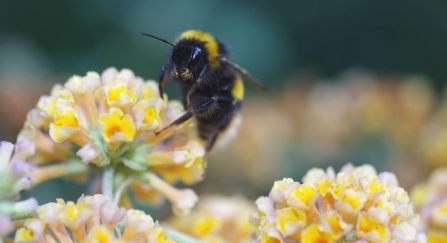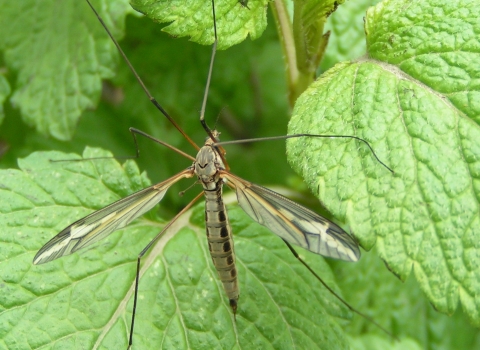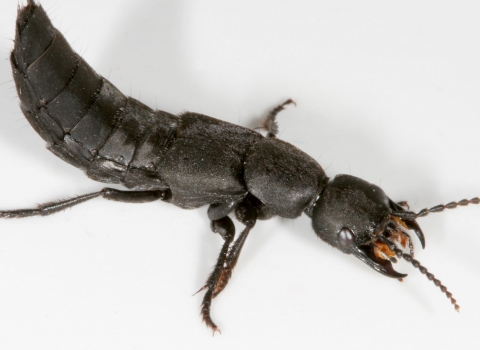So much of our agriculture, and so our food, depends on insects. They are at the base of everything; small, secretive, crucial and quite wonderful. But the terribly sad thing is that this vitally important message is only now being shared because insects are in trouble. Quite serious trouble. At the rate they are currently diminishing, many insect species could be gone within just a century. Many of us have already begun to notice this loss. When I was a child, while driving at night you would often have to stop to clear the myriad of splattered insects off your car windscreen. When was the last time you noticed just one moth on your windscreen?
Small but mighty
(C) Geoff Oxford

(c) Gillian Day
So why is this happening? One of the biggest changes since the 1950s is the increasing industrialisation of agriculture. Today, farm fields stretch away to the horizon and it’s all one crop; wheat, for example. But all sorts of different insects depend on all sorts of different plants to survive. Take the tansy beetle, which is very rare and named after its main food source - the tansy plant. If you’re an insect like the tansy beetle that’s got quite specialist needs, and you just find field after field of wheat, pretty soon you’re not going to be there anymore.

Crane fly © Richard Burkmar
For the love of flies…
Do you know that flies are one of the most diverse groups of animals on earth? With an estimated 160,000 species already known worldwide, flies are everywhere! In Britain there are about 7,000 species; 4,000 of which are found right here in Yorkshire. Though much maligned, flies actually do all kinds of useful things for us. It’s true that some spread diseases, but these are vastly outnumbered by the species that assist us through plant pollination and the removal of decaying dead animals, food waste and faecal matter. Services for which we should truly be thankful! You’re probably familiar with hover-flies or have been pestered by mosquitoes, but there are a whole lot more out there… At Cali Heath we have just reached 600 fly species being recorded - among which are several national rarities. In fact, this small nature reserve boasts the most species-rich Trust reserve list in regards to flies. Ranging in size from not much more than a pin-head, to large daddy long-legs with a wing span of more than 2 inches, the world of flies is truly vast. We hope you’ll join us in celebrating it.
As bad as the situation is, there are
still so many relatively small things
individuals can do to help insects
For example, never use pesticides– you really don’t need to! The aphids that are eating your plants can themselves be eaten by insect predators – all you’ve got to do is encourage them. So instead of dousing your plants in pesticides, grow lots of different plants to encourage different insects – hoverfly, lacewing and ladybird larvae will happily feast on those pesky aphids for you.
Even if you’ve just got a windowsill, you can grow plants. Search wildaboutgardens.org.uk to learn about the best plants for insects - many of which are so easy to grow! You want as large a variety as possible; different native plants that will flower all the way through the gardening year, so you’re providing a constant supply of food. Different plants will also encourage different insects; think about it as an ecosystem, where animals depend on each other. You need a large network of insects, from the ones that just eat nectar and plants to the ones that eat other insects, to keep everything in balance. The main thing is changing your attitude. The majority of people still view insects as annoying pests, and even terrifying creepy crawlies to be squished as soon as possible! But that’s just not true – insects are as fascinating and beautiful as they are vital. Bees can navigate miles just to find a clump of flowers they like; male moths have feathery antennae that pick up tiny amounts of pheromones (the smells sent out by a female) and will then travel great distances to find a mate.
Absolutely extraordinary – so tiny and yet they can do all these really incredible things!







